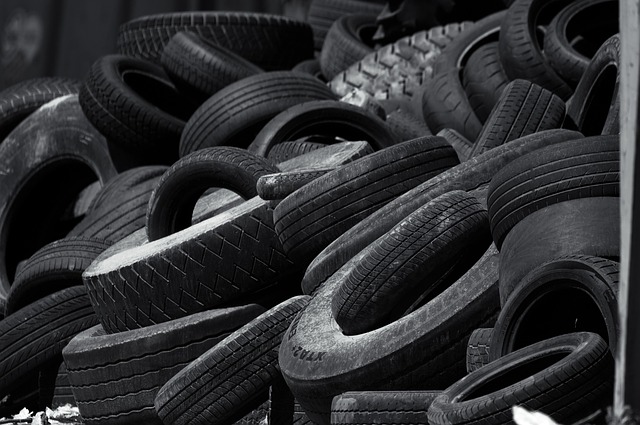When people think about automotive waste, the first image that often comes to mind is a pile of used tires sitting in a landfill. Yet, behind this seemingly simple disposal problem lies a complex network of environmental, economic, and technological factors that influence our planet’s future. The practice of recycling automobile tires, a process that converts worn out rubber into valuable raw materials, has evolved into a cornerstone of sustainable development and a critical tool for reducing ecological footprints worldwide.
The Scale of the Problem
Globally, millions of tires are retired each year, amounting to hundreds of millions of tons of waste. If left unmanaged, these tires can accumulate in landfills, occupy vast areas of land, and pose fire hazards. The sheer volume underscores the urgency of finding effective solutions. In many countries, the collection infrastructure is fragmented, leading to a reliance on informal disposal methods that can pollute soil and water resources.
- In the United States, approximately 200 million tires are retired annually, with only about 13% diverted to recycling streams.
- European nations report higher recycling rates, often exceeding 60%, thanks to robust regulatory frameworks and public awareness campaigns.
- In developing regions, informal collection practices sometimes result in tires being burned, releasing hazardous substances into the atmosphere.
Environmental Consequences of Tire Disposal
When tires are incinerated, they emit carbon dioxide, sulfur oxides, and volatile organic compounds, contributing to air pollution and greenhouse gas accumulation. Landfilled tires, on the other hand, can leach leachate—containing heavy metals and hydrocarbons—into groundwater, jeopardizing water quality for surrounding ecosystems and human communities.
“The uncontrolled combustion of tires is one of the fastest routes for small particle matter, which can travel miles and infiltrate the respiratory systems of both humans and wildlife,” notes Dr. Elena Rossi, a specialist in environmental toxicology.
Both scenarios underscore the carbon-intensive nature of improper disposal, reinforcing the need for a more sustainable approach.
What Is Recycling of Automobile Tires?
Recycling of automobile tires is a multi-stage process that transforms old rubber into new, useful products. The typical stages include collection, sorting, shredding, and reprocessing. These stages are often complemented by innovative green technologies that minimize energy use and maximize material recovery.
- Collection and Sorting: Tires are gathered from consumer drop-off points, automotive repair shops, and municipal waste facilities. Advanced imaging and sensor technology now allows for efficient sorting by tire type, brand, and age.
- Shredding: The tires are mechanically shredded into crumb rubber. This stage reduces volume by up to 90% and prepares the material for further processing.
- Reprocessing: The shredded rubber is mixed with binders, fibers, or additives. Depending on the end-use application—such as paving materials, sports surfaces, or energy generation—different chemical or thermal processes are employed.
- Product Manufacturing: The reprocessed rubber is formed into final products, including asphalt modifiers, playground mats, or even structural components for green infrastructure projects.
Innovations Driving Carbon Neutrality
Recent advances in green technologies are turning tire recycling into a carbon-neutral or even carbon-negative activity. Below are some of the most impactful innovations.
- Microwave Pyrolysis: This method heats shredded rubber in the absence of oxygen using microwave energy, producing clean oil and carbon black while significantly reducing CO₂ emissions compared to conventional pyrolysis.
- Carbon Capture and Utilization (CCU): Captured CO₂ from tire processing is reacted with hydrogen or other feedstocks to produce valuable chemicals, turning a waste byproduct into a resource.
- Life Cycle Assessment (LCA) Optimized Sorting: By applying LCA data, processors can determine the most sustainable pathways for each tire batch, ensuring that energy-intensive processes are reserved only for cases where no less polluting alternatives exist.
These technologies collectively contribute to a significant reduction in the net carbon footprint associated with tire waste management.
Economic and Social Dimensions
The shift from disposal to recycling also creates economic opportunities. The tire recycling industry supports jobs across the value chain—from collection workers to research scientists. Moreover, the creation of a circular economy model promotes resilience in local communities by reducing dependency on imported raw materials.
In many urban areas, the conversion of tire-derived products into permeable paving surfaces has led to improved stormwater management, reducing flooding risks and improving public safety. Additionally, playground surfaces made from recycled rubber offer safer, non-toxic alternatives to traditional concrete or asphalt, enhancing child health and well‑being.
Policy Instruments Encouraging Sustainable Practices
Governments worldwide are increasingly adopting policies that incentivize recycling of automobile tires. Some key approaches include:
- Extended Producer Responsibility (EPR) schemes that hold manufacturers accountable for the entire lifecycle of their products.
- Tax credits or rebates for companies that invest in green recycling technologies.
- Mandatory reporting on carbon footprints and recycling rates, fostering transparency and continuous improvement.
These policies not only align economic incentives with environmental goals but also create a framework for achieving broader carbon neutrality objectives.
The Role of Public Awareness
Consumer behavior remains a pivotal factor. Simple actions, such as properly disposing of used tires and supporting products made from recycled rubber, can amplify the impact of industrial efforts. Educational campaigns that highlight the environmental benefits of tire recycling can shift public perception, turning an overlooked waste stream into a celebrated component of sustainable development.
Case Study: Green Roadways
In a pilot program across several cities, waste tire crumb was incorporated into asphalt mixes for new roads. The resulting pavement displayed improved skid resistance, reduced noise pollution, and a lower overall carbon intensity compared to conventional asphalt. The project also generated a 30% reduction in landfill waste from tires in the participating municipalities.
“The success of this project demonstrates how integrated recycling solutions can deliver environmental benefits while also providing tangible economic returns,” explains city planner Miguel Torres.
Looking Ahead: The Future of Tire Recycling
The trajectory of tire recycling is set to accelerate, driven by technological breakthroughs, regulatory momentum, and increasing societal demand for sustainable products. Emerging research areas include:
- Nanotechnology-enabled surface treatments that extend the lifespan of recycled rubber products.
- Biological recycling methods that use microorganisms to break down rubber polymers into bio-based materials.
- Integration of digital twins and AI-driven logistics to optimize collection routes and reduce transportation emissions.
As these innovations mature, the vision of a truly carbon-neutral tire life cycle moves from aspiration to reality.
Final Thoughts
Recycling of automobile tires stands at the intersection of ecological stewardship, economic vitality, and technological innovation. By transforming what was once considered waste into valuable resources, societies can dramatically lower their carbon footprints, protect natural ecosystems, and foster resilient communities. The journey toward a fully sustainable tire lifecycle is ongoing, but the progress achieved to date offers a compelling roadmap for a greener future.




